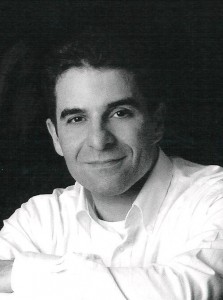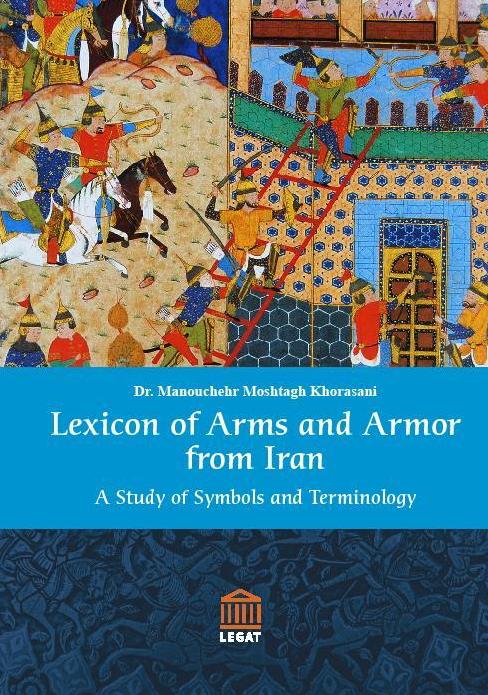Dr. Manouchehr Moshtagh Khorasani has announced the exhibition:
The Power of Iranian Steel: From Iron to Crucible Steel

This will be held by the Cultural Institute of Bonyad in Tehran from February 16 to March 02, 2011.
Dr. Khorasani worked as a historical arms and armor consultant for this exhibition. He guided the museum in selecting and describing 65 exquisite pieces of Iranians arms and armor including bronze and iron weapons, edged weapons (swords, qame, qaddare, daggers, knives), armor (shields, armguards, helmets), firearms (muskets and pistols) and some bowls and paintings depicting fighting scenes.
Dr. Manouchehr Moshtagh Khorasani, the world’s leading expert on the history of Iranian and Oriental arms. armour and firearms.
Many of the items at the exhibition are decorated with beautiful gold-inlaid and gold-overlaid floral and vegetal designs. Additionally, many items have gilded inscriptions on them. To show the development of making the crucible steel, some selected bronze and iron weapons from Iran are also shown. The central topic of the exhibition is the crucible steel showing the intricate crucible steel patterns. The following items are presented in the exhibition:
Luristan (bronze and iron age): 1) a bronze macehead from Luristan, 2) a bronze macehead with sharp flanges from Luristan, 3) a bronze macehead from Luristan, 4) an iron mask sword from Luristan,
Hasanlu (bronze age): 5) a bronze macehead from Hasanlu,
Northern part of Iran (bronze and iron age): 6) a copper arrowhead, 7) an ear-pommeled bronze sword from northern part of Iran, another ear-pommeled bronze sword from northern part of Iran, 9) a bronze sword with a cotton-reel pommel from Dailaman, 10) a bi-metallic sword with a bronze cotton-reel pommel and an iron bade from Dailaman, 11) an iron sword with a cotton-reel pommel from Dailaman,
Sassanian period: 12) a magnificent Sassanian sword with silver handle and scabbard
Samanid period: 13) a Samanid bowl depicting a mounted warrior armed with a slightly curved sword, 14) a Samanid bowl depicting a mounted warrior armed with a slightly curved sword and a lance, 15) a Samanid bowl depicting a foot soldier equipped with a straight short swords and a shield,
Safavid period: 16) a gold-overlaid saddle axe from the Safavid period, 17) a six-flanged mace made of steel from the Safavid period, 18) a steel mace with a rounded head from the Safavid period, 19) a curved Persian shamshir from the Safavid period with a crucible steel blade (woodgrain pattern) and handle slabs made of stag horn; the gold-inlaid inscriptions read “Bande-ye shah velayat Abbas” and “The work of Kalbeali”, 20) a curved Persian shamshir from the Safavid period with a crucible steel blade (woodgrain pattern) and handle slabs made of stag horn; gold-inlaid inscriptions on the blade read, “Bande-ye Shah Velayat Safi” and “The work of Assadollah”, 21) a curved Persian shamshir from the Safavid period with a crucible steel blade (ladder of Mohammad pattern) and handle slabs made of stag horn, 22) a curved Persian shamshir from the Safavid period with a crucible steel blade (woodgrain pattern) and handle slabs made of stag horn, 23) a Safavid kard with a crucible steel blade and gold-overlaid inscriptions from the holy Qur’an with handle slabs made of walrus ivory, 24) a dated and chiseled Safavid axe head from Shah Soltan Hosseyn Safavid period, 25) a matchlock wall gun from the Safavid period,
Afsharid period: 26) a magnificent axehead made of crucible steel with gold-overlaid floral design from the Afsharid period
Zand period: 27) a Zand painting showing the battles of Karim Khan Zand, 28) a pishqabz from the Zand period with a silver scabbard, 29) a magnificent pishqabz with chiseled silver handle and scabbard fittings and a crucible steel blade with tears of the wounded balls,
Qajar period: 30) a Qajar painting depicting the battle of Shah Ismail I with the Ottomans, 31) a curved Persian shamshir from the Qajar period with a magnificent crucible steel blade (woodgrain pattern) and handle slabs made of elephant ivory, 32) a curved Persian shamshir from the Qajar period with a crucible steel blade (woodgrain pattern) and handle slabs made of walrus ivory, 33) a curved Persian shamshir from the Qajar period with a crucible steel blade (woodgrain pattern) with a central fuller and handle slabs made of walrus ivory; the blade is gold-inlaid inscription “The Father of Sword The Ruler Mohammad Shah Qajar 1264”, 34) a curved Persian shamshir from the Qajar period with a crucible steel blade (woodgrain pattern) and a handle made of crucible steel with a gold-inlaid inscription that reads: “The Work of Assadollah Isfahani”, 35) a curved Persian shamshir from the Qajar period with a crucible steel blade (woodgrain pattern) and handle slabs made of stag horn, 36) a curved Persian shamshir from the Qajar period with a crucible steel blade (woodgrain pattern) and handle slabs made of elephant ivory; the blade is inscribed with a gold-overlaid inscription “Shah Reza”, 37) a chiseled saddle axe from the Qajar period, 38) a three-pronged javelin from the Qajar period, 39) a two-pronged spearhead from the Qajar period, 40) a gold-overlaid tabarzin from the Qajar period, 41) a kard with a crucible steel blade and gold-overlaid inscriptions from the holy Qur’an with handle slabs made of walrus ivory, 42) a khanjar with a crucible steel blade and a carved handle made of walrus ivory from the Qajar period, 43) a khanjar with enameled handle and scabbard with Qajar portraits from the Qajar period and a crucible steel blade, 44) a qaddare from the Qajar period, 45) a qame from the Qajar period, 46) a kard with a crucible steel blade and handle slabs made of walrus ivory from the Qajar period, 47) a magnificent khanjar with chiseled and enameled silver handle and scabbard from the Qajar period, 48) a magnificent chiseled steel shield from the Qajar period, 49) a beautiful chiseled and gold-overlaid kolahkhud from the Qajar period, 50) another chiseled and gold-overlaid kolahkhud from the Qajar period, 51) riveted mail armor from early Qajar period, 52) percussion musket from the Qajar period, 53) a flintlock musket from the Qajar period, 54) a dated (1259 Hegira) percussion cap musket attributed to Mohammad Shah Qajar made by Mohammad Ja’far Afshar, 55) a double-barreled percussion cap pistol from the Qajar period, 56) a flint lock psitol from the Qajar period, 57) a percussion cap pistol from the Qajar period, 58) a steel shield with the central sun in the middle from the Qajar period, 59) a demon-headed helmet with gold-overlaid and chiselled surface, 60) a chiseled and gold-overlaid helmet from the Qajar period, 61) a magnificent lacquered steel shield from the Qajar period, 62) an armguard with chiseled and gold-overlaid decorations, 63) a fish-shaped priming flask made of crucible steel, 64) a priming flask made of crucible steel, 65) a brass black powder flask covered with fabric.
Dr. Khorasani has written the text for the exhibition catalogue which will be distributed as a high quality colored catalogue during the exhibition. Khorasani’s most recent works include Arms and Armor from Iran: The Bronze Age to the end of the Qajar Period and most recently the Lexicon of Arms and Armor from Iran. To rrder these books, please click on the Legat Publishers link or order directly from LEGAT Publishers: Alexander Frank ([email protected])Tel. +49 (0) 70 73 / 30 24 49; Mobile +49 (0)179 / 453 61 21
A team of many experts have been working for months to realize this professional exhibition in Iran among them many art professionals, exhibition designers and photographers. The pictures of the catalogue and its paper are of very high quality. The opening day include a number of speeches by Iranian Studies and arms and armor experts, among them a speech by Ostad Mohammad Reza Farajian, the son of the late Ostad Hosseyn Farajian the legendary Iranian smith. Mr. Farajian will talk about the life of his father and show some magnificent pieces made by him. Another speech will be held by Ostad Joneydi on the weapons mentioned in the Shahname. Dr. Khorasani will also give a presentation on Persian crucible steel and also expand on his future projects. The opening ceremony will be also accompanied by recitals from Ferdowsi’s Iranian-epic, the Shahname.







